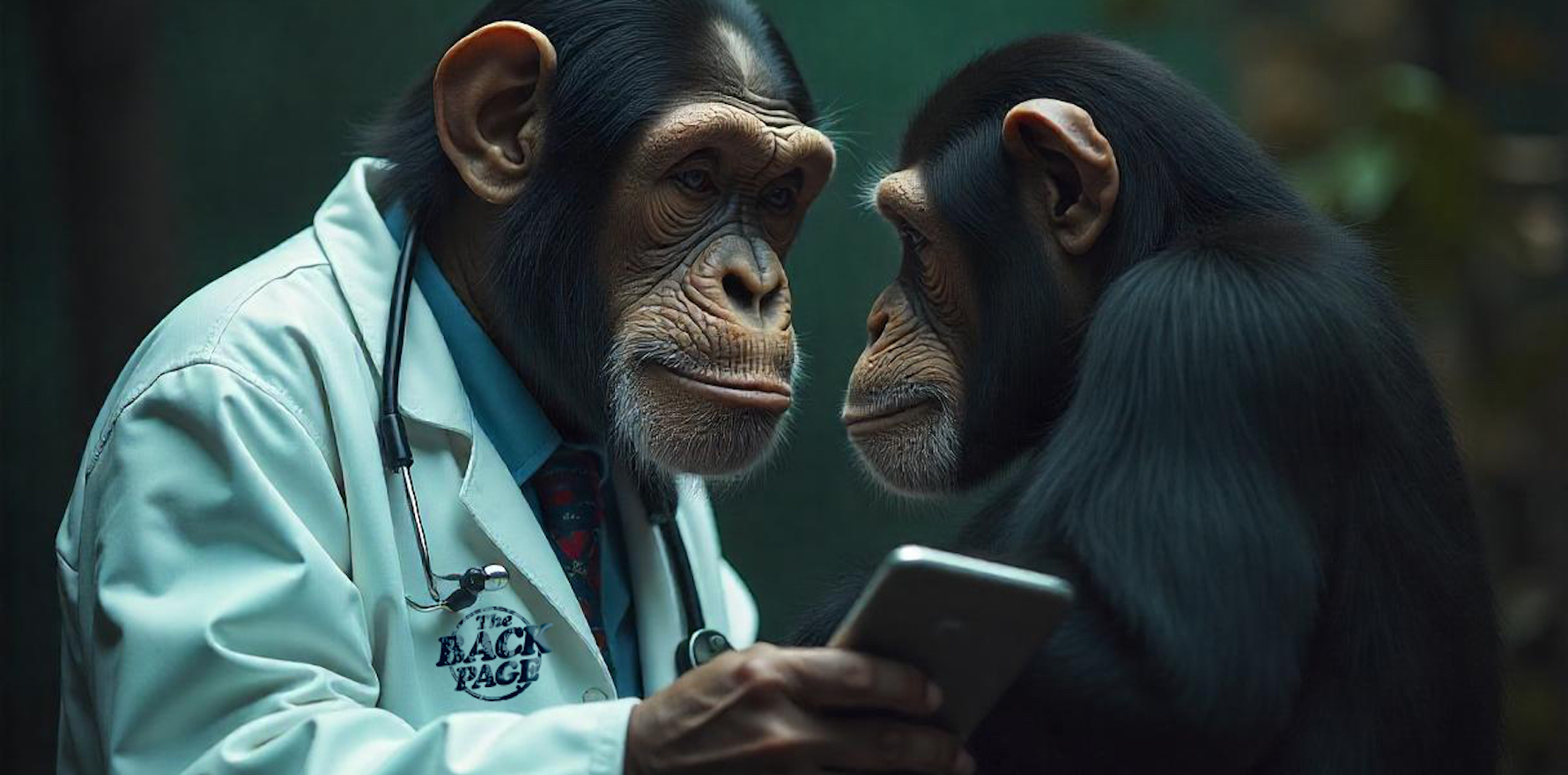Could this be a solution to the UCC staffing dilemma?
Back in the late 1970s, your Back Page scribbler studied a book called “In the Shadow of Man” by Dr Jane Goodall, which detailed how chimpanzees in the wild would fashion and modify natural objects to use as tools.
This was groundbreaking because, at the time, most folks thought tool-making in this sophisticated sense was something only humans got up to.
The upshot was that chimpanzees, with whom we naked apes share 98.8% of our DNA, were quite a bit smarter than previously believed.
Of course, we already knew that because we were big childhood fans of the TV series Lancelot Link Secret Chimp.
What’s more, the evidence for apes with acumen just keeps on mounting up, as this latest research from boffins at Oxford University demonstrates.
Publishing this month in the journal Frontiers in Ecology and Evolution, researchers who have been monitoring two chimpanzee communities in Uganda describe how they have observed the animals helping each other with wound care and hygiene.
Some chimps in particular were seen using fresh, chewed leaves from plants known for their traditional medicinal uses and bioactive properties to treat the wounds of their companions.
“Chimpanzee wound care encompasses several techniques: direct wound licking, which removes debris and potentially applies antimicrobial compounds in saliva; finger licking followed by wound pressing; leaf-dabbing; and chewing plant materials and applying them directly to wounds,” the study’s lead author Dr Elodie Freymann told media.
“All chimpanzees mentioned in our tables showed recovery from wounds, though of course we don’t know what the outcome would have been had they not done anything about their injuries.
“We also documented hygiene behaviours, including the cleaning of genitals with leaves after mating and wiping the anus with leaves after defecation — practices that may help prevent infections.”
Interestingly, the research team also noted that the caring chimps not only provided medical assistance to individuals they were genetically related to, they also ministered to community members that weren’t family, despite the potential risk from being exposed to pathogens.
This behaviour led our scientists to suggest medical care among chimpanzees was much more widespread than first realised and could help “illuminate the evolutionary roots of human medicine and healthcare systems”.
“By documenting how chimpanzees identify and utilise medicinal plants and provide care to others, we gain insight into the cognitive and social foundations of human healthcare behaviours,” Dr Freyman said.
In the short term, however, it prompted your correspondent to ponder: “Could this be a solution to the UCC staffing dilemma?”
Probably not, but we do have it on good authority the Queensland government is considering snapping up these budding anthropoid medics for its physician assistants’ initiative.
Show us your caring side by sending story tips to cate@medicalrepublic.com.au


